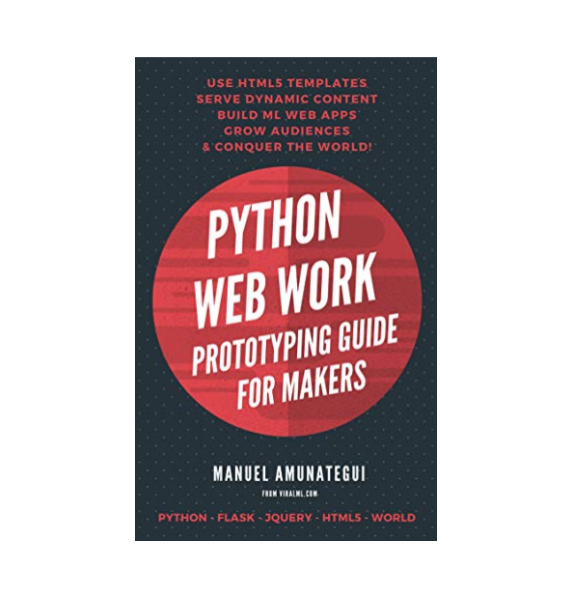
SMOTE - Supersampling Rare Events: Machine Learning with R
Introduction
Brief introduction to the SMOTE R package to super-sample/ over-sample imbalanced data sets. SMOTE will use bootstrapping and k nearest neighbor to synthetically create additional observations. Data sets with a target frequency of less than 15% are usually considered as imbalanced/rare. Companion code on GitHub: https://github.com/amunategui/SMOTE-Oversample-Rare-Events Original SMOTE white paper: https://www.jair.org/media/953/live-953-2037-jair.pdf MORE: Signup for my newsletter and more: http://www.viralml.com Connect on Twitter: https://twitter.com/amunategui My books on Amazon: The Little Book of Fundamental Indicators: Hands-On Market Analysis with Python: Find Your Market Bearings with Python, Jupyter Notebooks, and Freely Available Data: https://amzn.to/2DERG3d Monetizing Machine Learning: Quickly Turn Python ML Ideas into Web Applications on the Serverless Cloud: https://amzn.to/2PV3GCV Grow Your Web Brand, Visibility & Traffic Organically: 5 Years of amunategui.github.Io and the Lessons I Learned from Growing My Online Community from the Ground Up: Fringe Tactics - Finding Motivation in Unusual Places: Alternative Ways of Coaxing Motivation Using Raw Inspiration, Fear, and In-Your-Face Logic https://amzn.to/2DYWQas Create Income Streams with Online Classes: Design Classes That Generate Long-Term Revenue: https://amzn.to/2VToEHK Defense Against The Dark Digital Attacks: How to Protect Your Identity and Workflow in 2019: https://amzn.to/2Jw1AYS CATEGORY:DataScience HASCODE:True
Code

SMOTE - Supersampling Rare Events in R
Practical walkthroughs on machine learning, data exploration and finding insight.
Resources
Packages Used in this Walkthrough
- {DMwR} - Functions and data for the book "Data Mining with R" and SMOTE algorithm
- {caret} - modeling wrapper, functions, commands
- {pROC} - Area Under the Curve (AUC) functions
The SMOTE function oversamples your rare event by using bootstrapping and k-nearest neighbor to synthetically create additional observations of that event. The definition of rare event is usually attributed to any outcome/dependent/target/response variable that happens less than 15% of the time. For more details about this algorithm, read the original white paper, SMOTE: Synthetic Minority Over-sampling Technique, from its creators.
The best way to illustrate this tool is to apply it to an actual data set suffering from this so-called rare event. We’ll use the Thyroid Disease data set from the UCI Machine Learning Repository (University of California, Irvine) containing positive and negative cases of hyperthyroidism. This is a condition in which the thyroid gland produces too much thyroid hormone (also known as “overactive thyroid”).
Let’s Clean Some Data
Let’s load the hypothyroid data, clean it up by removing the colons and periods, and appending readable column names:
hyper <-read.csv('http://archive.ics.uci.edu/ml/machine-learning-databases/thyroid-disease/hypothyroid.data', header=F)
names <- read.csv('http://archive.ics.uci.edu/ml/machine-learning-databases/thyroid-disease/hypothyroid.names', header=F, sep='\t')[[1]]
names <- gsub(pattern =":|[.]",x = names, replacement="")
colnames(hyper) <- names
We change the target column name from hypothyroid, negative. to target and set any values of negative to 0 and everything else to 1:
colnames(hyper) <-c("target", "age", "sex", "on_thyroxine", "query_on_thyroxine",
"on_antithyroid_medication", "thyroid_surgery", "query_hypothyroid",
"query_hyperthyroid", "pregnant", "sick", "tumor", "lithium",
"goitre", "TSH_measured", "TSH", "T3_measured", "T3", "TT4_measured",
"TT4", "T4U_measured", "T4U", "FTI_measured", "FTI", "TBG_measured",
"TBG")
hyper$target <- ifelse(hyper$target=='negative',0,1)
Whether dealing with a rare event or not, it is a good idea to check the balance of positive versus negative outcomes:
print(table(hyper$target))
## 0 1
## 3012 151
print(prop.table(table(hyper$target)))
## 0 1
## 0.95226 0.04774
At 5%, this is clearly a skewed data set, aka rare event.
A quick peek to see where we are:
head(hyper,2)
## target age sex on_thyroxine query_on_thyroxine on_antithyroid_medication
## 1 1 72 M f f f
## 2 1 15 F t f f
## thyroid_surgery query_hypothyroid query_hyperthyroid pregnant sick tumor
## 1 f f f f f f
## 2 f f f f f f
## lithium goitre TSH_measured TSH T3_measured T3 TT4_measured TT4
## 1 f f y 30 y 0.60 y 15
## 2 f f y 145 y 1.70 y 19
## T4U_measured T4U FTI_measured FTI TBG_measured TBG
## 1 y 1.48 y 10 n ?
## 2 y 1.13 y 17 n ?
The data is riddled with characters. These need to binarize into numbers to facilitate modeling:
ind <- sapply(hyper, is.factor)
hyper[ind] <- lapply(hyper[ind], as.character)
hyper[ hyper == "?" ] = NA
hyper[ hyper == "f" ] = 0
hyper[ hyper == "t" ] = 1
hyper[ hyper == "n" ] = 0
hyper[ hyper == "y" ] = 1
hyper[ hyper == "M" ] = 0
hyper[ hyper == "F" ] = 1
hyper[ind] <- lapply(hyper[ind], as.numeric)
repalceNAsWithMean <- function(x) {replace(x, is.na(x), mean(x[!is.na(x)]))}
hyper <- repalceNAsWithMean(hyper)
Hi there, this is Manuel Amunategui- if you're enjoying the content, don't forget to signup for my newsletter:
Reference Model
We randomly split the data set into 2 equal portions using the createDataPartition function from the caret package :
library(caret)
set.seed(1234)
splitIndex <- createDataPartition(hyper$target, p = .50,
list = FALSE,
times = 1)
trainSplit <- hyper[ splitIndex,]
testSplit <- hyper[-splitIndex,]
prop.table(table(trainSplit$target))
## 0 1
## 0.95006 0.04994
prop.table(table(testSplit$target))
## 0 1
## 0.95446 0.04554
The outcome balance between both splits is still around 5% therefore representative of the bigger set - we’re in good shape.
We train a treebag model using caret syntax on trainSplit and predict hyperthyroidism on the testSplit portion:
ctrl <- trainControl(method = "cv", number = 5)
tbmodel <- train(target ~ ., data = trainSplit, method = "treebag",
trControl = ctrl)
predictors <- names(trainSplit)[names(trainSplit) != 'target']
pred <- predict(tbmodel$finalModel, testSplit[,predictors])
To evaluate the model, we call on package pROC for an auc score and plot:
library(pROC)
auc <- roc(testSplit$target, pred)
print(auc)
## Data: pred in 1509 controls (testSplit$target 0) < 72 cases (testSplit$target 1).
## Area under the curve: 0.985
plot(auc, ylim=c(0,1), print.thres=TRUE, main=paste('AUC:',round(auc$auc[[1]],2)))
abline(h=1,col='blue',lwd=2)
abline(h=0,col='red',lwd=2)

An auc score of 0.98 is great (remember it ranges on a scale between 0.5 and 1, where 0.5 is random and 1 is perfect). It is hard to imagine that SMOTE can improve on this, but…
Let’s SMOTE
Let’s create extra positive observations using SMOTE. We set perc.over = 100 to double the quantity of positive cases, and set perc.under=200 to keep half of what was created as negative cases.
library(DMwR)
trainSplit$target <- as.factor(trainSplit$target)
trainSplit <- SMOTE(target ~ ., trainSplit, perc.over = 100, perc.under=200)
trainSplit$target <- as.numeric(trainSplit$target)
We can check the outcome balance with prop.table and confirm that we equalized the data set between positive and negative cases of hyperthyroidism.
prop.table(table(trainSplit$target))
## 1 2
## 0.5 0.5
We then train using the SMOTE‘d training set and predict using the same testing set as used before on the non-SMOTE‘d training set to ensure we’re comparing apples-to-apples:
tbmodel <- train(target ~ ., data = trainSplit, method = "treebag",
trControl = ctrl)
predictors <- names(trainSplit)[names(trainSplit) != 'target']
pred <- predict(tbmodel$finalModel, testSplit[,predictors])
auc <- roc(testSplit$target, pred)
print(auc)
## Data: pred in 1509 controls (testSplit$target 0) < 72 cases (testSplit$target 1).
## Area under the curve: 0.991
Wow 0.991, it managed to better the old auc score of 0.985!
plot(auc, ylim=c(0,1), print.thres=TRUE, main=paste('AUC:',round(auc$auc[[1]],2)))
abline(h=1,col='blue',lwd=2)
abline(h=0,col='red',lwd=2)

Conclusion
Not bad - we ended up reducing the overall size and getting a better score. SMOTE works great in some situation and not-so-great in others. This definitely requires some trial-and-error but the concept is very promising when stuck with extremely skewed and, therefore, overly sensitive data.
Full source code:
# load data sets
hyper <-read.csv('http://archive.ics.uci.edu/ml/machine-learning-databases/thyroid-disease/hypothyroid.data', header=F)
names <- read.csv('http://archive.ics.uci.edu/ml/machine-learning-databases/thyroid-disease/hypothyroid.names', header=F, sep='\t')[[1]]
names <- gsub(pattern =":|[.]",x = names, replacement="")
colnames(hyper) <- names
# fix variables and column headers
colnames(hyper) <-c("target", "age", "sex", "on_thyroxine", "query_on_thyroxine",
"on_antithyroid_medication", "thyroid_surgery", "query_hypothyroid",
"query_hyperthyroid", "pregnant", "sick", "tumor", "lithium",
"goitre", "TSH_measured", "TSH", "T3_measured", "T3", "TT4_measured",
"TT4", "T4U_measured", "T4U", "FTI_measured", "FTI", "TBG_measured",
"TBG")
hyper$target <- ifelse(hyper$target=='negative',0,1)
head(hyper,2)
# check balance of outcome variable
print(table(hyper$target))
print(prop.table(table(hyper$target)))
# binarize all character fields
ind <- sapply(hyper, is.factor)
hyper[ind] <- lapply(hyper[ind], as.character)
hyper[ hyper == "?" ] = NA
hyper[ hyper == "f" ] = 0
hyper[ hyper == "t" ] = 1
hyper[ hyper == "n" ] = 0
hyper[ hyper == "y" ] = 1
hyper[ hyper == "M" ] = 0
hyper[ hyper == "F" ] = 1
hyper[ind] <- lapply(hyper[ind], as.numeric)
repalceNAsWithMean <- function(x) {replace(x, is.na(x), mean(x[!is.na(x)]))}
hyper <- repalceNAsWithMean(hyper)
# split data into train and test portions
library(caret)
set.seed(1234)
splitIndex <- createDataPartition(hyper$target, p = .50,
list = FALSE,
times = 1)
trainSplit <- hyper[ splitIndex,]
testSplit <- hyper[-splitIndex,]
prop.table(table(trainSplit$target))
prop.table(table(testSplit$target))
# model using treebag
ctrl <- trainControl(method = "cv", number = 5)
tbmodel <- train(target ~ ., data = trainSplit, method = "treebag",
trControl = ctrl)
predictors <- names(trainSplit)[names(trainSplit) != 'target']
pred <- predict(tbmodel$finalModel, testSplit[,predictors])
# evaluate the model's performance
library(pROC)
auc <- roc(testSplit$target, pred)
print(auc)
plot(auc, ylim=c(0,1), print.thres=TRUE, main=paste('AUC:',round(auc$auc[[1]],2)))
abline(h=1,col='blue',lwd=2)
abline(h=0,col='red',lwd=2)
# SMOTE more positive cases
library(DMwR)
trainSplit$target <- as.factor(trainSplit$target)
trainSplit <- SMOTE(target ~ ., trainSplit, perc.over = 100, perc.under=200)
trainSplit$target <- as.numeric(trainSplit$target)
prop.table(table(trainSplit$target))
# evaluate the SMOTE performance
tbmodel <- train(target ~ ., data = trainSplit, method = "treebag",
trControl = ctrl)
predictors <- names(trainSplit)[names(trainSplit) != 'target']
pred <- predict(tbmodel$finalModel, testSplit[,predictors])
auc <- roc(testSplit$target, pred)
print(auc)
plot(auc, ylim=c(0,1), print.thres=TRUE, main=paste('AUC:',round(auc$auc[[1]],2)))
abline(h=1,col='blue',lwd=2)
abline(h=0,col='red',lwd=2)
Show Notes
(pardon typos and formatting -these are the notes I use to make the videos)
Brief introduction to the SMOTE R package to super-sample/ over-sample imbalanced data sets. SMOTE will use bootstrapping and k nearest neighbor to synthetically create additional observations. Data sets with a target frequency of less than 15% are usually considered as imbalanced/rare. Companion code on GitHub: https://github.com/amunategui/SMOTE-Oversample-Rare-Events Original SMOTE white paper: https://www.jair.org/media/953/live-953-2037-jair.pdf MORE: Signup for my newsletter and more: http://www.viralml.com Connect on Twitter: https://twitter.com/amunategui My books on Amazon: The Little Book of Fundamental Indicators: Hands-On Market Analysis with Python: Find Your Market Bearings with Python, Jupyter Notebooks, and Freely Available Data: https://amzn.to/2DERG3d Monetizing Machine Learning: Quickly Turn Python ML Ideas into Web Applications on the Serverless Cloud: https://amzn.to/2PV3GCV Grow Your Web Brand, Visibility & Traffic Organically: 5 Years of amunategui.github.Io and the Lessons I Learned from Growing My Online Community from the Ground Up: Fringe Tactics - Finding Motivation in Unusual Places: Alternative Ways of Coaxing Motivation Using Raw Inspiration, Fear, and In-Your-Face Logic https://amzn.to/2DYWQas Create Income Streams with Online Classes: Design Classes That Generate Long-Term Revenue: https://amzn.to/2VToEHK Defense Against The Dark Digital Attacks: How to Protect Your Identity and Workflow in 2019: https://amzn.to/2Jw1AYS CATEGORY:DataScience HASCODE:True



